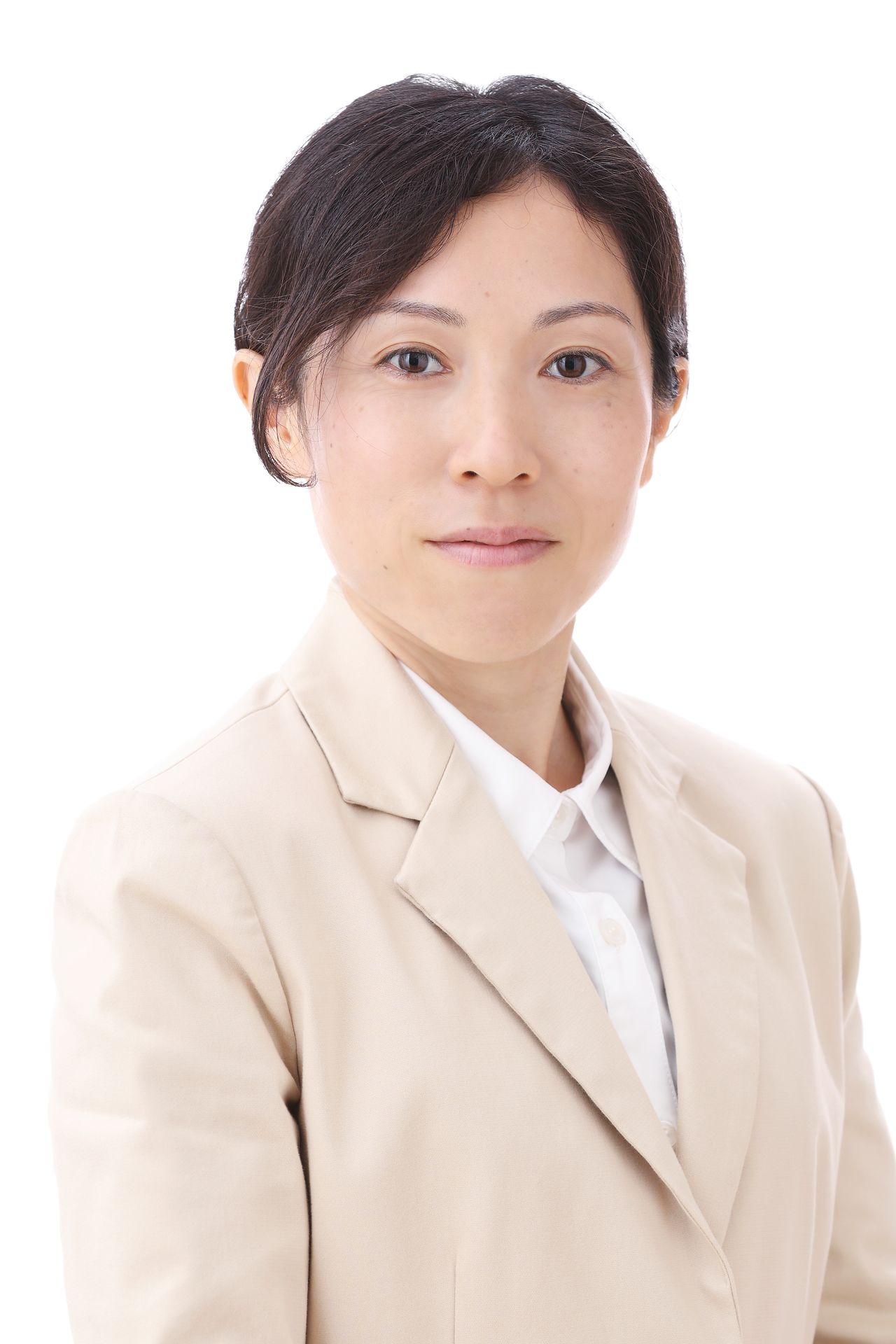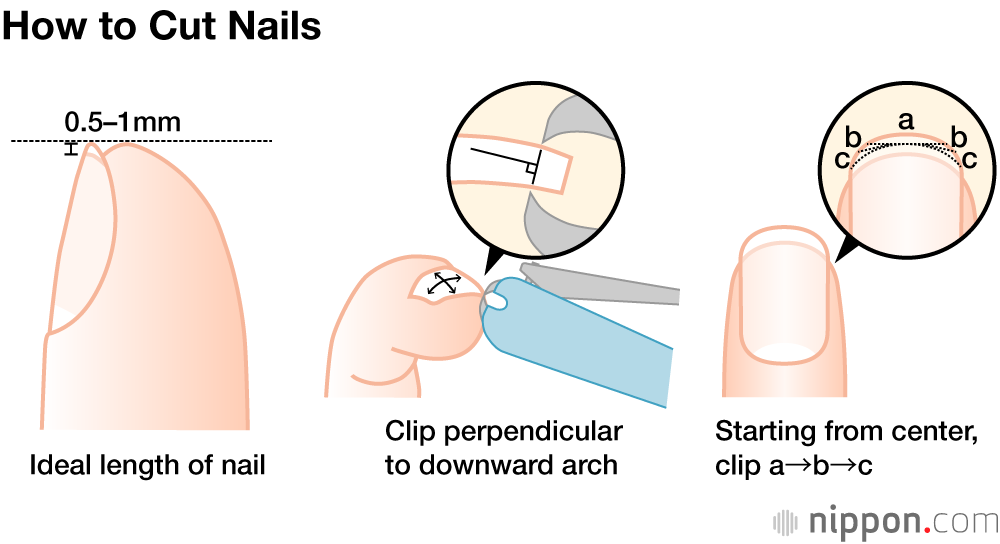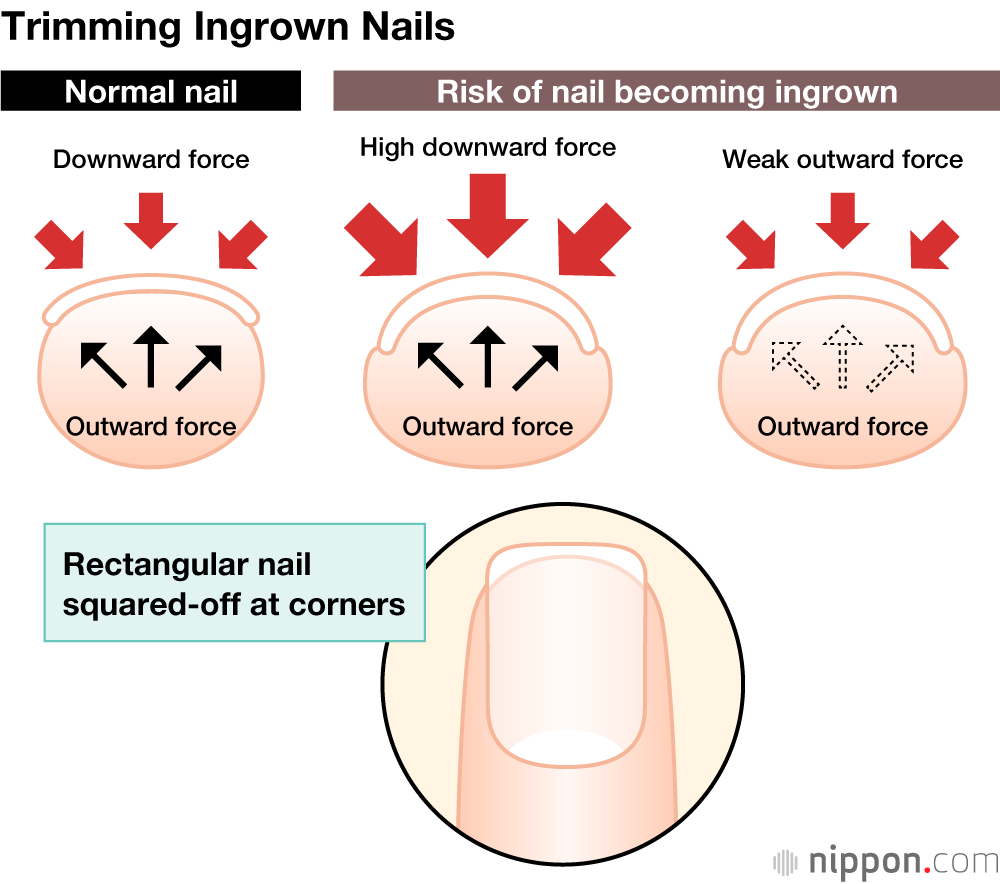
Japanese Cutlery Firm Kai Championing the Humble Nail Clipper
Guide to Japan Lifestyle- English
- 日本語
- 简体字
- 繁體字
- Français
- Español
- العربية
- Русский
Rethinking Nail Clippers
Speaking to a room of elementary school children, Yamada Kimihisa queries his young audience: “Who knows the right way to trim nails?” The question draws puzzled looks, but as a nail trimming advisor for Gifu Prefecture-based cutlery manufacturer Kai, Yamada is accustomed to such bemused responses. People typically pay little more than rudimentary attention to nail care, cutting back fingernails and toenails only when they have grown too long. This indifference extends to the type of nail clippers employed, something that Kai is trying to change.
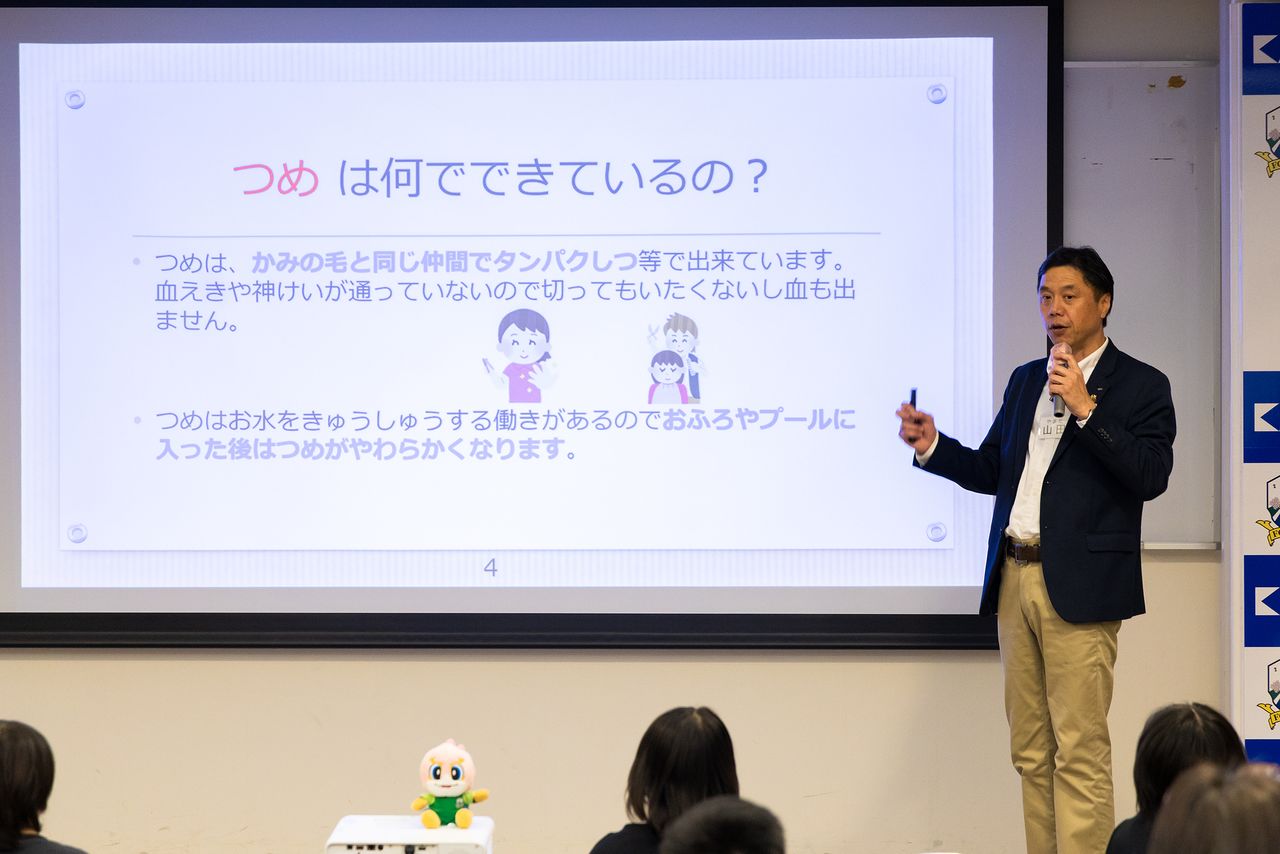
Nail trimming advisor Yamada Kimihisa holds discusses how to properly cut nails. (© Nippon.com)
Nail clippers are standard items in most medicine cabinets. In Japan, they can be purchased at ¥100 shops, and ¥500 models are available at most convenience stores. There are also up-scale versions like Kai’s Seki Magoroku brand that range from ¥1,000 to ¥2,000. Yamada argues that compared to the small fortune people regularly fork out on haircare and other beauty products, money spent on a nice pair of Kai nail clippers is a sensible investment as they will last for 10 years or more.
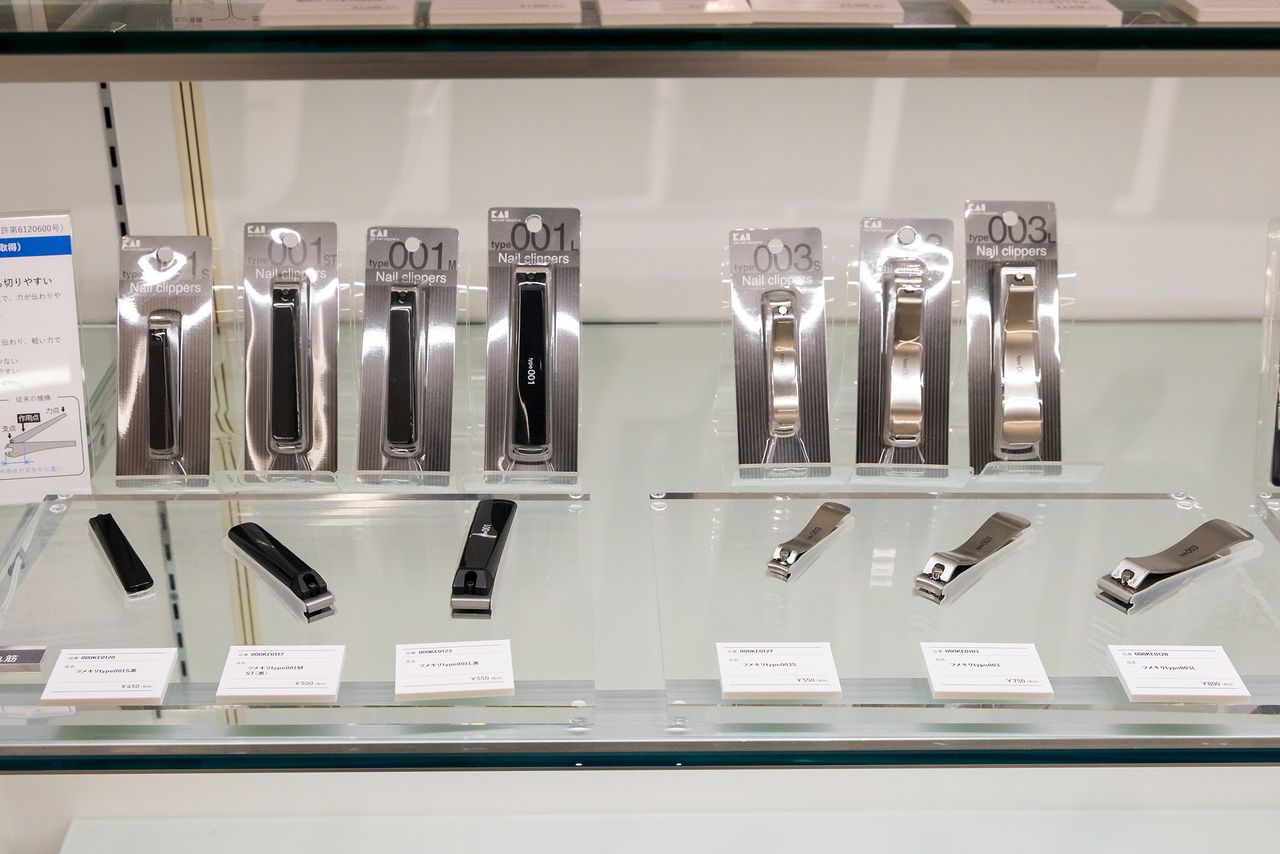
A line of Kai nail clippers in the ¥500-range available at convenience stores and other retailers. (© Nippon.com)
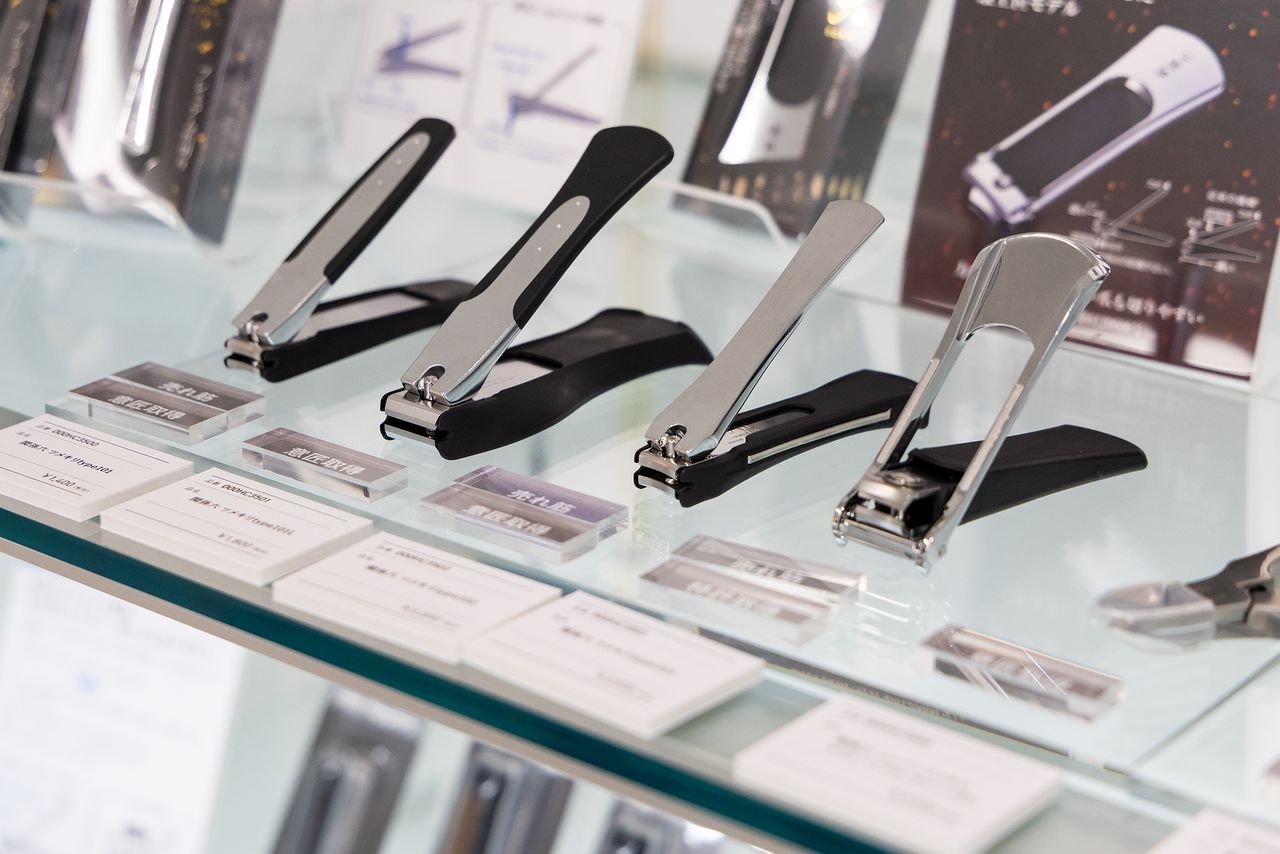
Kai’s flagship Seki Magoroku series of nail clippers. (© Nippon.com)
Finding the Right Fit
Kai encourages its employees to accrue knowhow about its kitchen knives, scissors, and other cutlery products, reserving the title of “meister” for those who reach the pinnacle of expertise. Currently there are two people at the firm certified as nail clipper meisters, Yamada and Asami Meiko.
Asami, who works at Kai’s Tokyo headquarters, and Yamada are dedicated to raising awareness of the importance of looking after one’s nails. They run classes on nail care for elementary school students, mainly in Seki where Kai is based, and also host seminars and other events in locations around Japan. Asami advises attendees of these events to take the time to find clippers that fit them personally rather sharing a communal pair, stressing that “picking out the right clippers starts with knowing how to go about trimming your nails.”

The showroom at Kai’s Tokyo headquarters displays the company’s range of products. (© Nippon.com)
Trimming to Perfection
Unless a person prefers long nails, Asami explains that it is ideal to maintain the free edge of the nail—the white part that extends beyond fingers and toes—at around 0.5 to 1 millimeter in length. Nails, which are made of a protein called keratin, are comprised of 12–16% water and can become dry and easily damaged when they grow too long. Dirt and bacteria are also issues. Studies have shown that nails that are 2 millimeters long harbor up to 630,000 bacteria, while those reaching 3 millimeters have a whopping 3.4 million microbes lurking under them. Tearing and cracking provide even more space for germs to thrive.
Nails grow quickly—fingernails at 0.1 millimeter a day and toenails at 0.05 millimeter—making trims every 5 to 7 days for the former and 10 to 14 days for the latter ideal. Asami recommends breaking the clipping process into five steps. Starting from the center of the nail, cut off the middle section, taking care that the blade of the clipper is perpendicular to the downward arch of the nail. Next, trim to the left and right in the same manner, and finally clip the outer edges so that the nail has a squared-off appearance with slightly rounded corners.
Avoiding Nail Trouble
For people who suffer from ingrown nails, Asami advises squaring the corners of the nail rather than rounding them off so that the nail has a straight edge. Factors ranging from physical issues to ill-fitting shoes to walking patterns can cause nails to become ingrown. Asami explains that cutting the nail straight across helps dissipate the pressure that cause nails to curve downward at the edges and allow them to more easily extend horizontally.
Core to trimming nails is the cutting ability of the nail clipper. Nails have a three-layer structure that can be easily broken or torn by a blunt clipper. Asami says that using a sharp pair of clippers to cut perpendicular to the downward curve of the nail and then smoothing the edges with a nail file helps prevent cracking and other issues, ensuring the health of nails.
She encourages each person to find a trimming style that best suits their nails, but also stresses the importance of viewing proper nail care as part and parcel of maintaining a healthy lifestyle. Children learn from their parents how to trim their nails, making instilling proper nail-clipping habits extra important. Reflecting on her work, Asami says, “I want to start a chain with each person that will continue for three, four, or even more generations.”
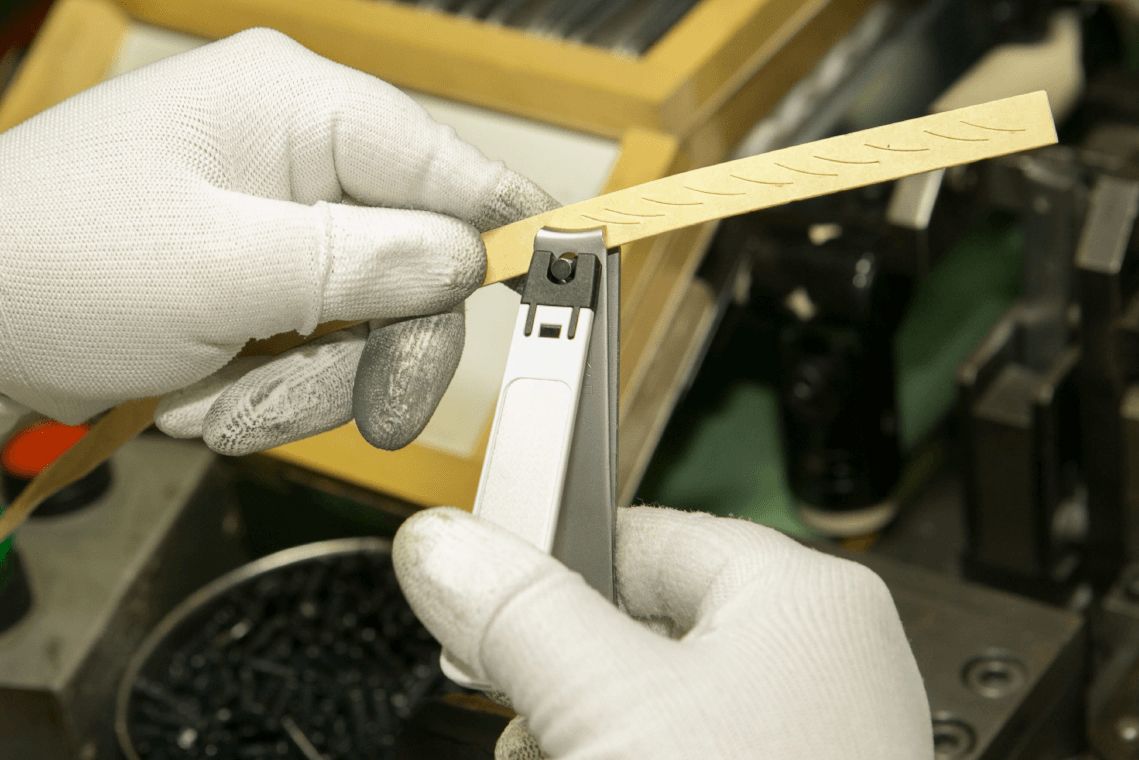
A worker at Kai adjusts the blades of a nail clipper. (© Kai)

Parents and children often attend Kai’s nail-trimming seminars. (© Nippon.com)
Trimming Options
There is a wide variety of nail-cutting implements to choose from, including lever-type clippers with curved cutting edges, nipper-types suited to thicker nails, and scissor-types for weak nails and soft nails of small children.
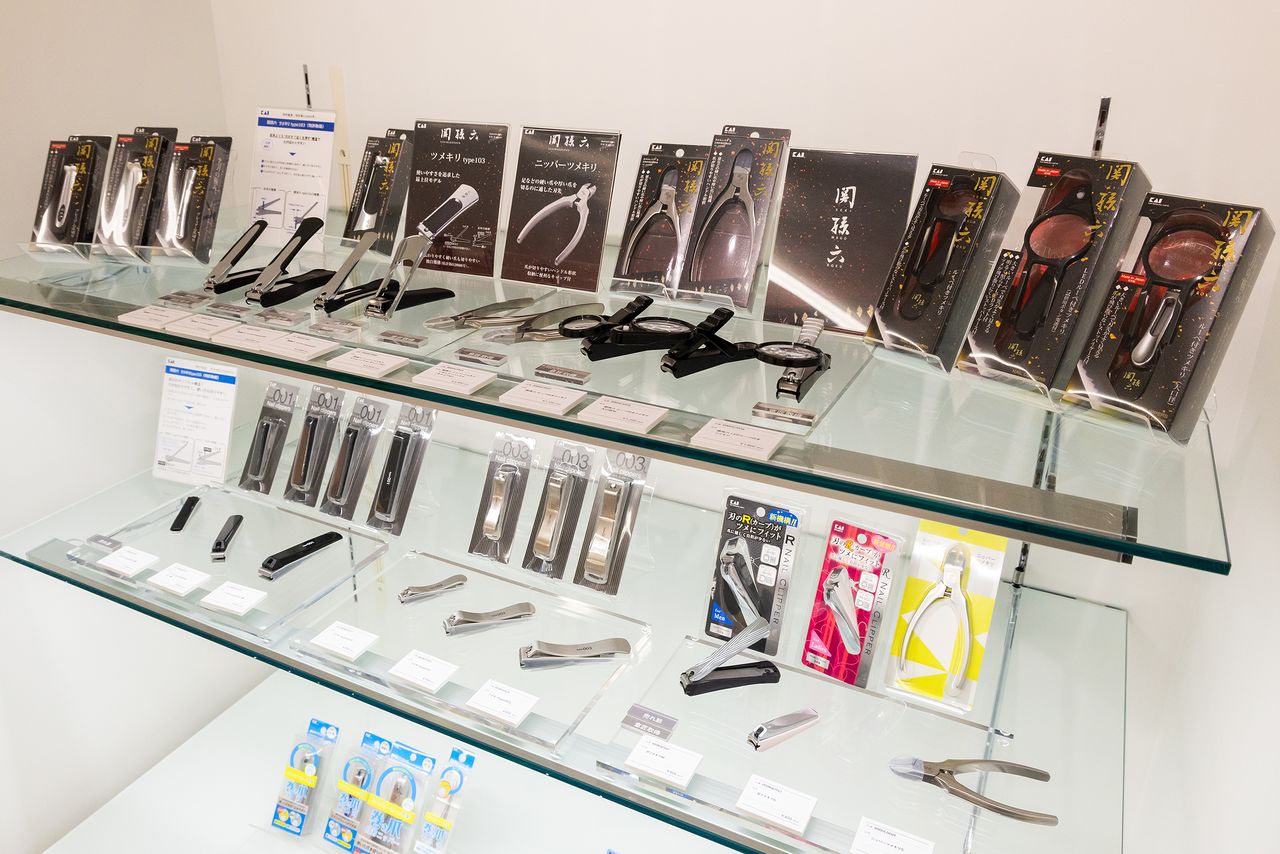
Kai’s lineup includes lever-type clippers, snippers, and more. (© Nippon.com)
When choosing a lever-type clipper, the first thing to consider is size. For a male of average build, Asami recommends an M size for fingernails and L size for toenails, which are thicker. She discourages the habit of households using a single clipper as factors like age, gender, and body size influence the type of nails a person has—one size does not fit all.
The edge of a lever-type clipper also needs to be considered. Asami says that while clippers with curved blades are popular for fingernails, a straight or slanted edge is more suited to toenails, while a concave edge is good for trimming the arched shape of ingrown nails as it makes it easier to square the nail. Other popular types include clippers with arched blades suitable for the delicate nails of children and people with petite hands as well as varieties fitted with magnifying glasses to provide users a better view.
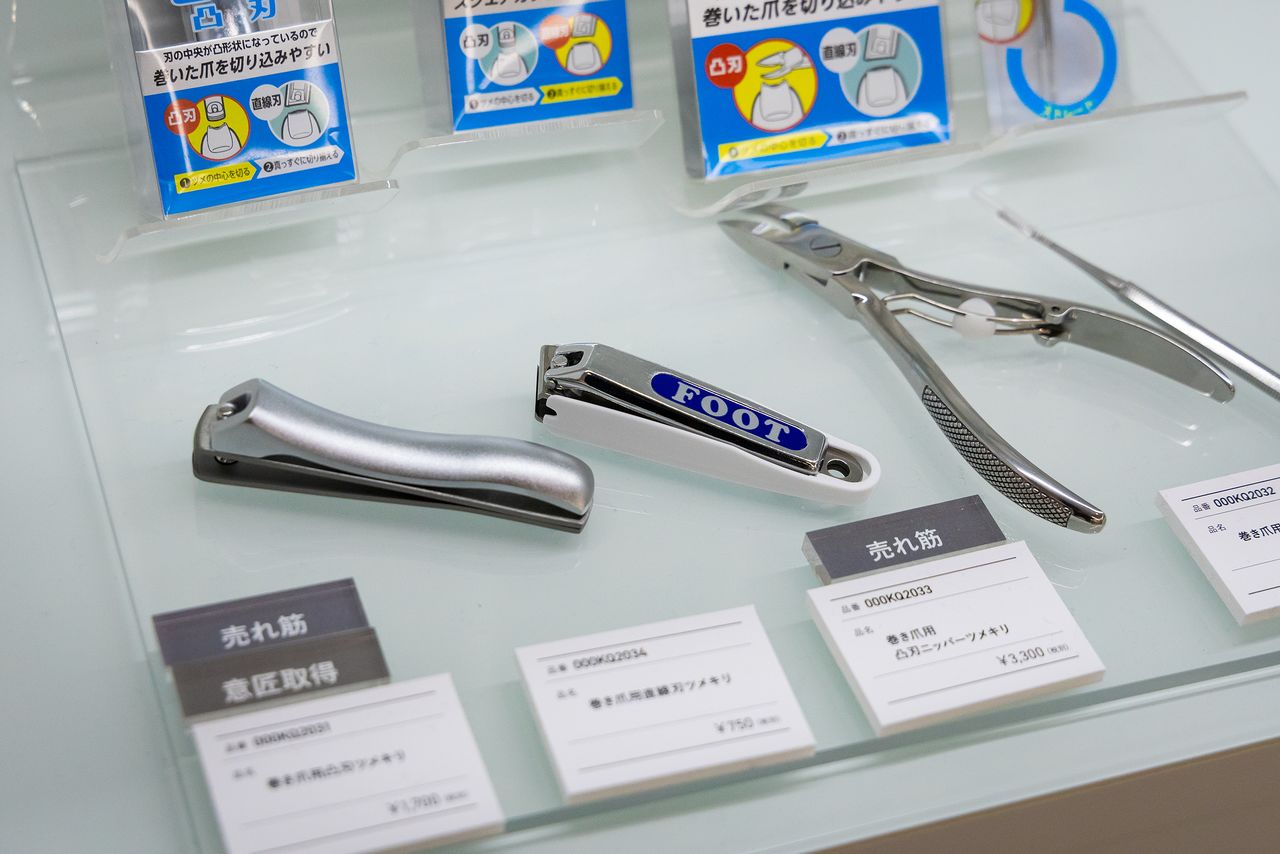
Kai has a range of products geared toward people who suffer from ingrown nails. (© Nippon.com)
Overseas Demand
One development of note is the uptick in demand of Japanese-made nail clippers among overseas visitors, particularly from countries where eating with bare hands is a common practice. Travelers from India and some predominantly Islamic countries, for instance, are known to load up on Kai’s nail clippers to distribute as gifts to friends and family back home.
Looking to tap into new markets in Asia, Kai in 2012 established a subsidiary in India, where it manufactures its Tsumekiri brand of nail clippers. The product, which features a pocket for nails and tool for after-meal cleaning, sells for the reasonable price of around 200 rupees (about ¥400). In 2023, Kai sold some 200,000 of the clippers.
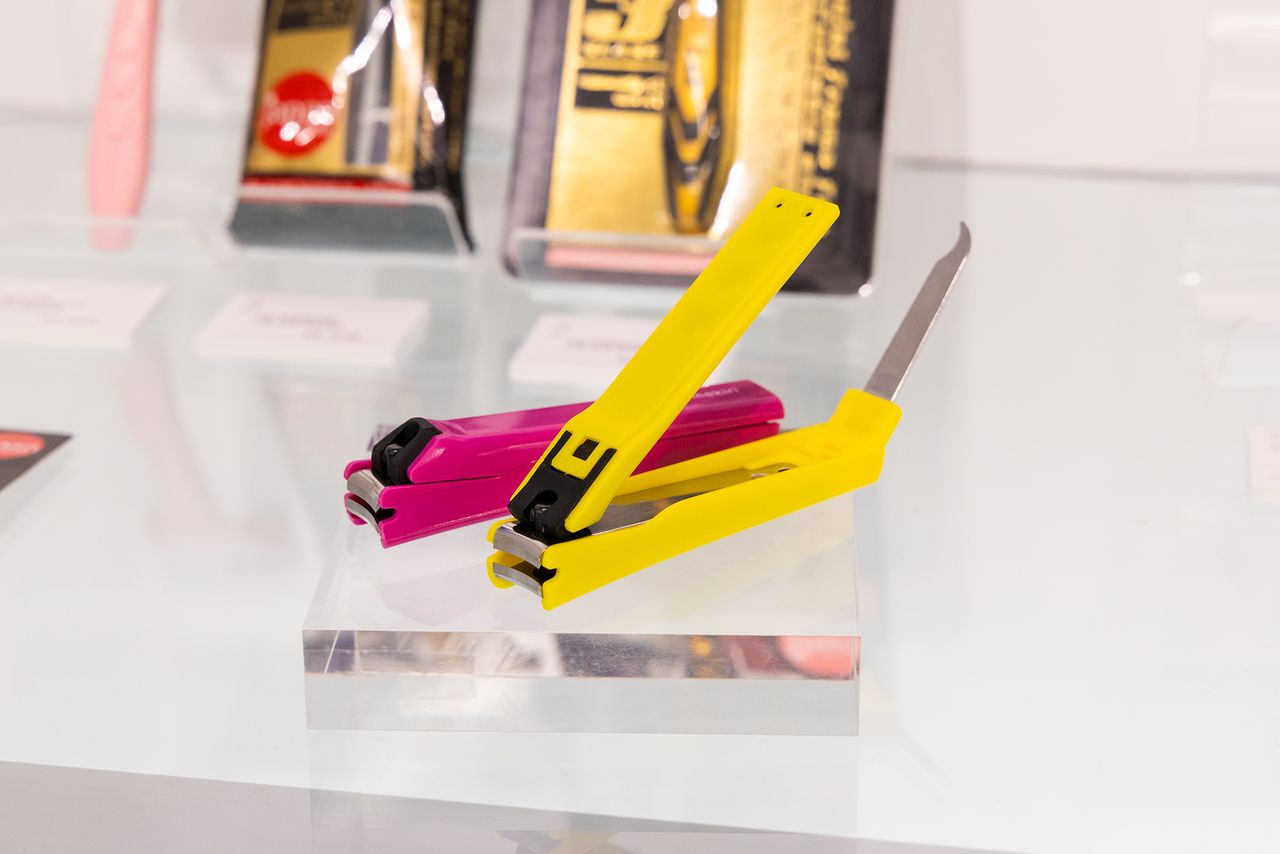
Kai’s Indian-made Tsumekiri nail clipper. (© Nippon.com)
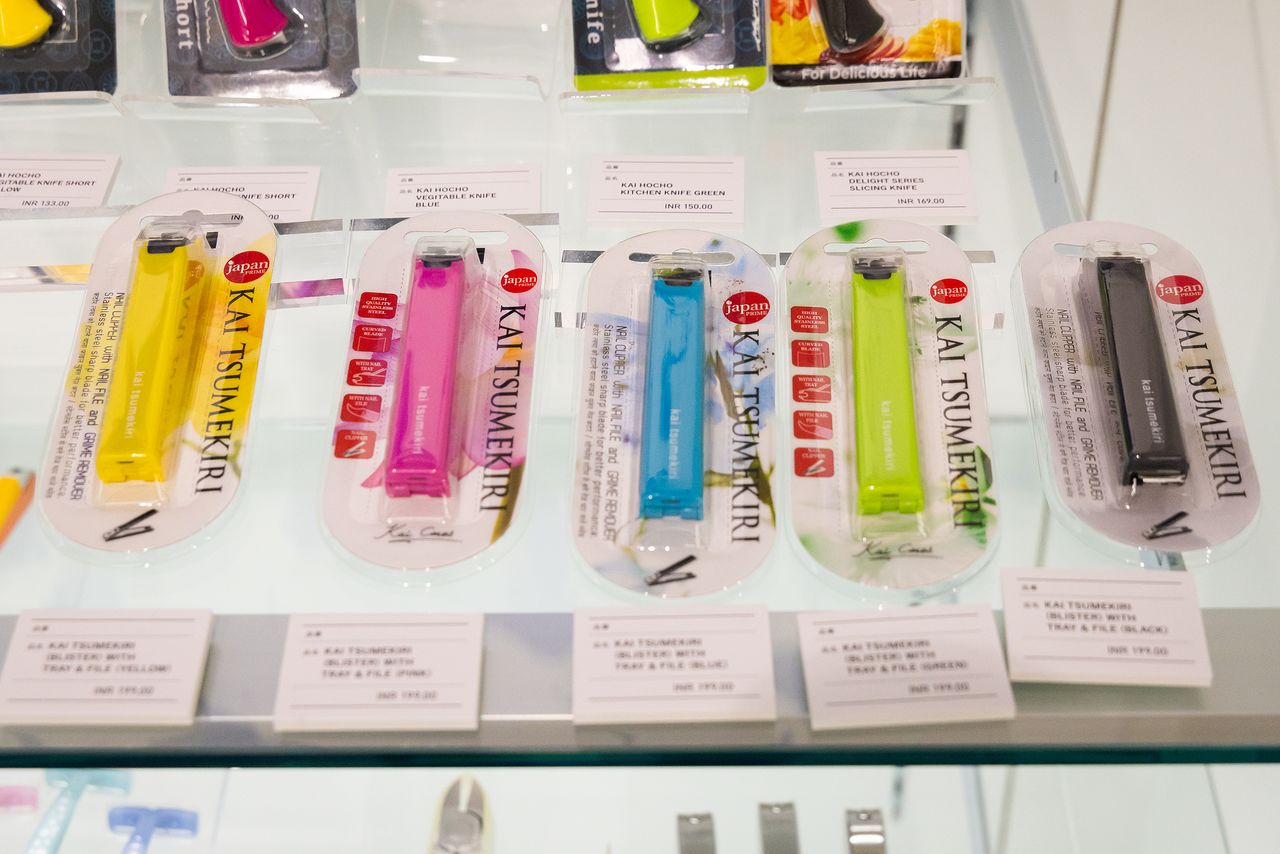
The Tsumekiri nail clippers come in a variety of vibrant colors and prominently feature the brand name. (© Nippon.com)
Forging Tradition
Seki’s reputation for crafting fine blades stretches back eight centuries and is built on the reputation of nokaji, the highly skilled blacksmiths who once plied their trade in the area. The city and surrounding areas are still home to around 300 businesses involved in the cutlery trade.

The Oyana factory of Kai Industries in Seki. (© Nippon.com)
Kai manufactures its lineup of some 400 products with what Asami calls nokaji spirit. The techniques that these “field smiths” cultivated have been handed down over generations, and today go into creating Kai’s fine cutlery. “This spirit of excellence extends across the company, even to the making of nail clippers,” declares Asami. And it is this dedication that motivates Kai’s duo of nail clipper meisters to continue their crusade to build awareness of proper nail care.
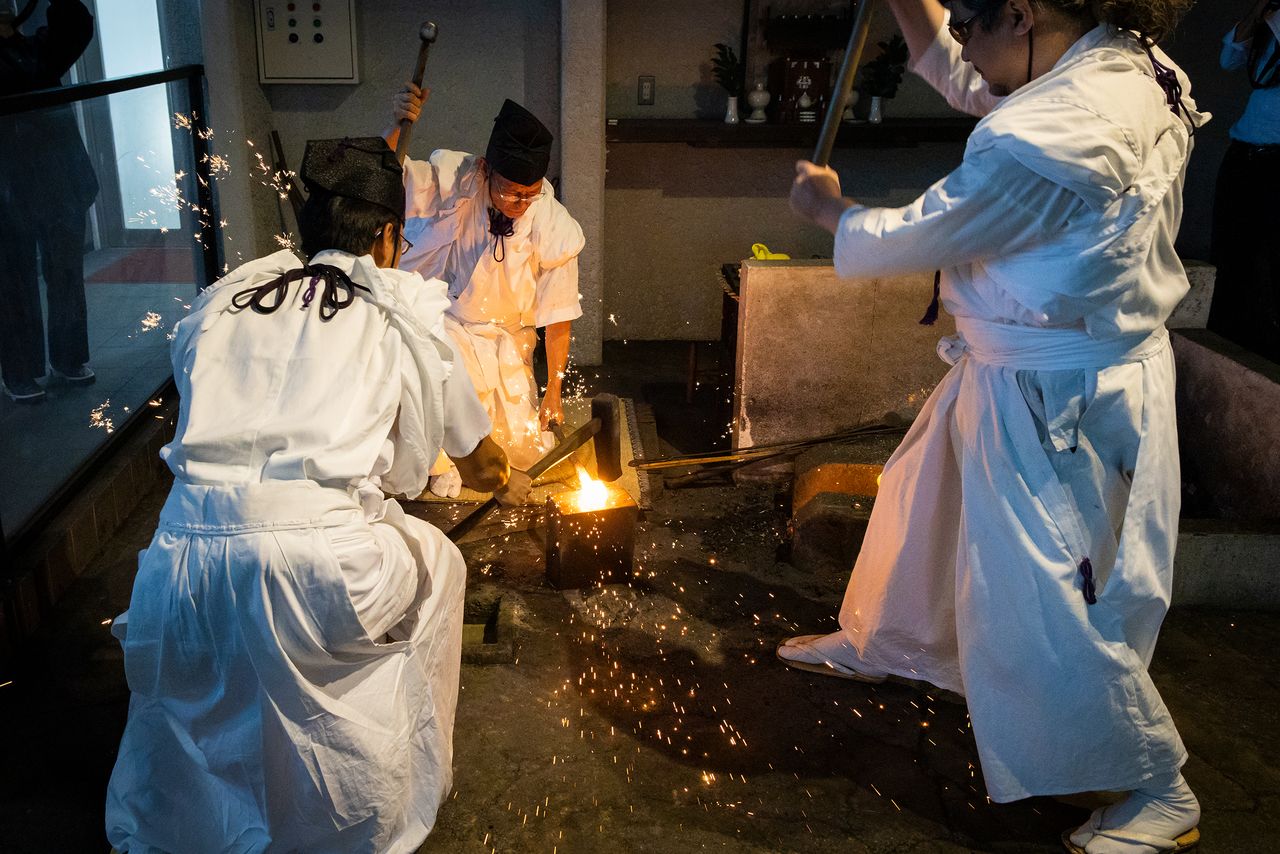
A demonstration of sword forging at the Seki Traditional Swordsmith Museum. (© Nippon.com)
(Originally published in Japanese. Research and text by Hashino Yukinori. Banner photo: Kai’s Yamada Kimihisa instructs an elementary school student on how to properly clip fingernails. © Nippon.com.)

